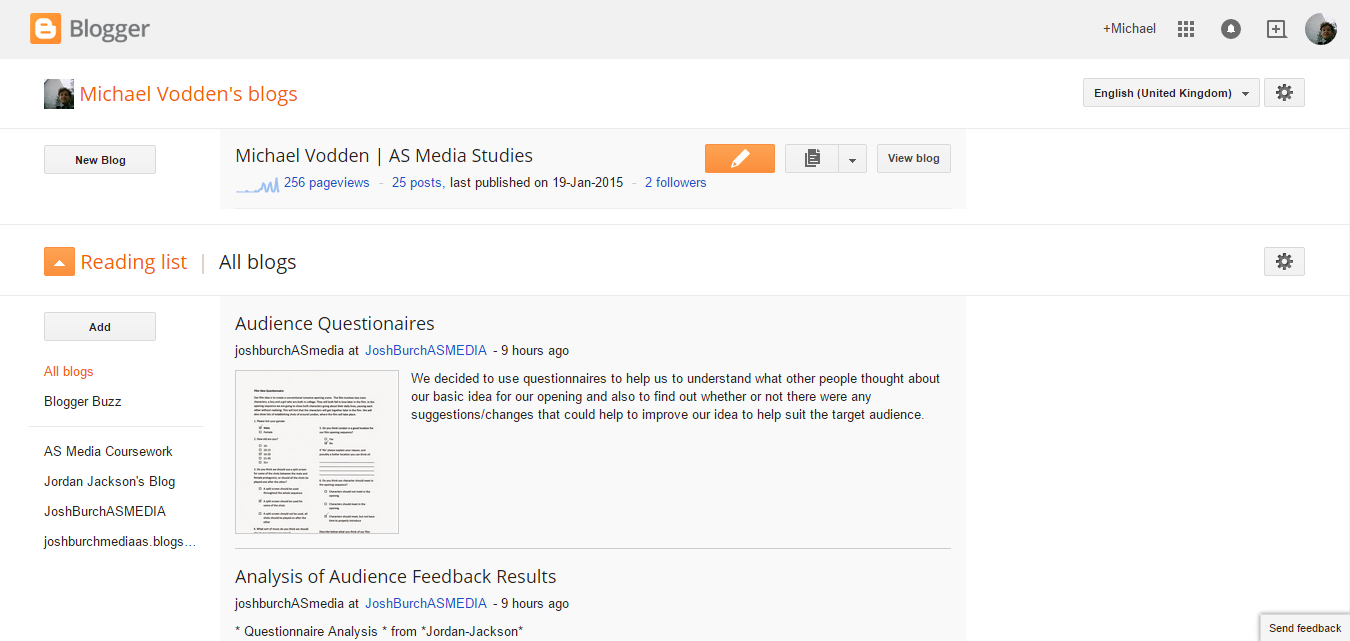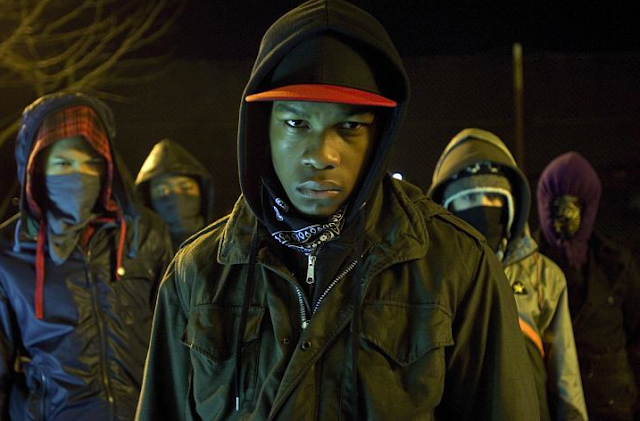We've learned a lot in the process of creating our preliminary and final tasks. I'll be detailing what we have learned in this evaluation.
Weaknesses in and things we learned from the preliminary task
We learned a variety of things from filming our preliminary task. First of all, we learned to pay more attention to filming and detail. We learned this from a variety of issues with the task. For instance, there is a continuity error when Sara sits down across Josh's desk. At the end of the shot where she walks in, she sits down with the bag still in her hands. However, in the next shot, her bag is gone.
Left: Sara holding the bag. Right: Sara no longer holding the bag.
Another issue that taught us to pay more attention to detail was the action match of Sara opening the door. There were supposed to be more shots, but they did not fit together well. This is because the door was opened slightly differently in each shot and there was not enough room to edit them smoothly. Finally, there were some issues with the shot of Sara walking used in the split-screen. The shot was both very shaky and unstable and you could see me filming it in the background. My reflection is visible in the reflection of the glass behind Sara. It's not obvious, but noticeable. All of these issues taught us to pay more attention to detail and the way we were filming shots.
Secondly, we learned to film long shots so that there was plenty of room available for editing. This is because of the dialogue between Sara and Josh. It was very difficult to make the conversation seem smooth in editing and the result we ended up with was not very good. In the shot where Josh shouts "You're fired!" you can still hear Sara saying her previous line. This has happened because they said their lines too quickly during filming.
Third of all, we learned to be more considerate of lighting. When Sara and Josh are talking, Sara's face very dark and difficult to see. This is because we turned off the lights behind Josh with the intention of making him darker so he looked more malevolent. The problem with this is that the windows behind Sara produced too much natural light and just made her darker while Josh looked lighter.
The poor lighting on Sara's face.
Another thing we learned was to plan what we want to film. Our preliminary task was very unorganised and unfocused. The shots were not planned and filmed poorly. We made up what we wanted to film on the spot. This was a contributor to the other errors that we made in the task.
Finally, we also learned more about how to use software such as Final Cut Express. We took the preliminary task as a chance to practice using a split-screen because we wanted to use at least one in our actual opening sequence. The one we made turned out quite well and we did use one in the full task. We also learned about manipulating sound. We increased the volume when Sara was speaking because she came out quite quiet in the shots compared to Josh.
How we have ensured the full task does not have these weaknesses and used what we learned
We made sure to pay extra attention to detail when filming for the full task. We ensured that all of the details were correct, such as the angle, lighting, acting, camera movements etc. Some of the shots were filmed multiple times so we had multiple options in editing or because we made an error in the original. We checked all of our shots after filming them to make sure that they were good enough.
To prevent any problems in editing, we ensured that there we filmed plenty of each shot. We tried to make sure each shot was at least ten seconds long so that we had enough footage to work with and room to edit down. This meant that the editing process was a lot easier and that the final product was of a lot higher quality.
We also payed more attention to the lighting of our shots. A large problem with the preliminary task was that it was very difficult to see Sara's face. In the full task, we have been sure to use lighting so that the audience can see what we want them to and we've also used it to our advantage in some shots to make them look better.
Examples of good use of lighting in the full task.
Finally, we made sure to plan our shots more effectively for filming the final task. Our preliminary task suffered because we weren't entirely sure what we wanted to film. Therefore, we made a list of the shots that we definitely wanted to get on the day of filming. We also had a rough idea of what we wanted the final outcome to be. This meant that we knew what we had to do, were kore focused, and that it was easier to come up with new ideas for shots.
What we have learned overall about practical work
Overall, we've learned a lot about the processes of creating a media product and the film industry as a whole. One of the things we've learned is the time and effort that goes into making a good media product. It's a very meticulous and time-consuming process. We've also learned important skills for software and editing. We've all learned a lot about using Final Cut Express and me especially since I took a lead role in editing. Finally, we've also learned about the importance of planning and attention to detail. Planning is very important and makes filming a lot easier. It means you know what you need to film, streamlining the process and saving a lot of time and effort on the day. Attention to detail is highly important in making good practical work. By being especially attentive to areas such as mis-en-scene, camera, and audio, you end up with a much higher quality product than you would have produced otherwise.
Essentials for good practical work
- Good teamwork - your team need to co-operate well if you're going to get anything done.
- Knowing the shots and outcome you want - when you know what you actually need to film, it becomes a lot easier and less time-consuming.
- Good camerawork - having good quality shots will make editing a lot easier and the final product look a lot better.
- Attention to all aspects of the product - attention to detail makes for a higher quality product
- Experimentation - by trying lots of different ideas, you give yourself a lot more options and can come out with better work than you thought you would make.
By Michael Vodden














